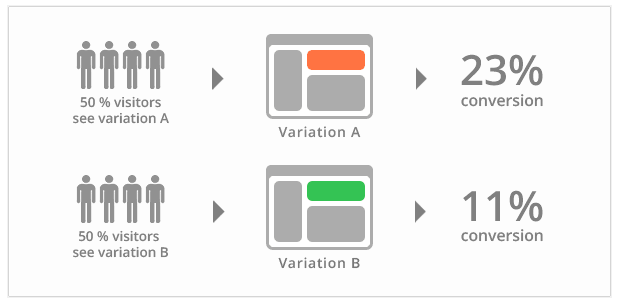The Content Marketing Weekly delivers the industry insights you need to stay ahead of the curve. This week’s edition features spooky content formats, the fine line of “monstrous” branding, too-smart-for-their-own-good marketing machines and much more.
5 Social Media Trends That Will Have Maximum Impact in 2018
Was that a ghost? No, it was ephemeral content.
In this post from Adweek, we uncover the major social media trends that may be creeping up on marketers, one of which is ephemeral content, or content that disappears within 24 hours or less.

Snapchat has perfected this format, and users believe short-run content is more authentic than sponsored ads or posts that are remarketed over and over in an attempt to turn them into buyers.
Other key trends are:
- Personalized narratives through social influencers or brand storytellers.
- Social media chat bots expediting customer service requests.
- Live streaming or two-way streaming.
- Artificial intelligence and image recognition.
As social media marketing displaces traditional advertising, some of the slow-moving brands left behind will face downright scary futures: falling engagement rates, fewer online followers and insufficient technological capabilities.
In 2018 and beyond, social media will be a visual-first and mobile-first channel – don’t get buried alive in competitors’ marketing prowess; focus on adapting to the above trends and scaling content accordingly.
Read on for additional commentary.
DirecTV Turns Parents Monstrous in Ad from Spectrum
Bad-mouthing competitors, portraying them as evil or directly challenging them via content is generally a no-no. But that’s exactly what Spectrum does in its “Monster” series. See the latest below:
The convergence of humor, precision and strong characters drives the story, essentially overriding the need to actually focus on products or logos.
This approach to visual storytelling highlights how companies can position themselves in a comedic way while still being actively confrontational with their branding, what some refer to as “competitive advertising.”
While the efficacy of such a strategy is not universal to all brands, experimenting with this approach is a worthwhile endeavor in creative discussions and brainstorming sessions. Additionally, building out defined audience personas can help determine whether viewers would actually appreciate content that fits this bill.
Find out why this video was an AdAge Editor’s Pick here.
Everything You Need to Know Before You Start A/B Testing
A/B testing is pretty much the Halloween equivalent of trying on multiple costumes before you go out for the night.
As Neil Patel points out in this Quick Sprout article, A/B testing enables marketers to identify “the optimal configuration” of how a web page is displayed. By using a control and a test subject (red CTA vs. blue CTA, for instance), you gather data on how each adjustment to a web page impacts conversions.

Via quicksprout.com
An A/B test, or split test, sends half your site visitors to one iteration of a page and the other half to an adjusted page that serves the same purpose. Whichever version of that web page produces more conversions should become your new standard, as it has proven to be more impactful.
However, don’t stop there – continue to tweak layout, formats, fonts, CTAs, colors, verbiage, ads and everything else that goes on your pages so that you finally settle on a high-performing combination of page features.
For the specifics on how to run an A/B test from start to finish, click here.
AI is Enhancing the Role of Marketers in Progressive Companies
If you think ghosts, werewolves and bad Halloween costumes were something to be worried about, wait until you hear about the machine-learning bots that may soon rule your marketing life.
For several years now, marketers have approached the concept of artificial intelligence with trepidation – are they really digital overlords bent on minimizing our roles, or will they be partners in crime with the humans that utilize AI?
This article from VentureBeat illustrates how some companies are using AI to make jobs more meaningful and time-efficient – you know, not so scary after all.
9 types of human #intelligence! As #AI matures, it's less about #tech, more about the relationship between human + #artificialIntelligence. pic.twitter.com/riVKzO1hit
— Mike Quindazzi (@MikeQuindazzi) October 4, 2017
For one, email marketing automation is a new industry standard, as it allows humans to avoid the “soul-crushing email list management process.” And data-gathering? AI captures every digital trail left by site visitors and puts this data right at your doorstep. From there, the human elements of strategy, intuition, industry experience and creativity take that data and turn it into a comprehensive marketing plan.
While, 5, 10, 20 years from now, the convergence of humans and machines might result in some sort of extraterrestrial marketing cyborg that never makes mistakes, I wouldn’t place my bets on it.
Read more on how AI keeps us marketers out of the weeds.
Avoid those black cats out there today, folks.

See you next week.





